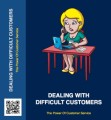Table of Contents
Introduction …5
Everything You Need to Know About Cryptocurrencies .7
The Blockchain Verification System Explained ..8
Crypto Currencies Have No Physical Form .8
What Are Data Miners? 9
What Is an ICO? …11
The White Paper Role in the ICO Process …13
What Should You Include in Your ICO White Paper? .13
The Technical Stuff ..14
This Sounds Like Crowdfunding … Is It? ….16
Where Should You List Your ICO? .17
Legal Considerations …18
What Pricing Structure Should You Use for Your ICO? .19
What Forms of Payment to Accept ..20
What Product or Service is Right for an ICO? …..22
Post-ICO Tip – Token Locking 23
10 Best Practices for Making Your Initial Coin Offering Work ….25
Conclusion …27
Sample Content Preview
This virtual money idea is not new at all.
When your employer hands you your paycheck, no physical money changes hands. You give your paycheck to your bank, your banker punches some keys on a keyboard, and a virtual amount of money is transferred to your account from whoever wrote the check to you. Then when you are shopping for groceries, and you slide your plastic, money is taken out of your account to pay for those groceries. Nowhere in this process did any physical money change hands. This is exactly how cryptocurrencies work. Cryptocurrencies are all about confirming a transaction and adding that confirmation to the blockchain of transactions and ledger updates which existed beforehand.
What Are Data Miners?
How does this confirmation take place? Remember, there is no centralized authority to confirm a transaction and update ledgers. This means that you and everyone else participating in a virtual currency system can theoretically act as a data miner. In a cryptocurrency network, a miner “digs” through the data of a proposed transaction and confirms it once it has been legitimized. When that transaction has been confirmed by a miner, a new link in the blockchain is created.
For this verification, miners are rewarded with a token of the particular cryptocurrency involved.
There is no centralized network that designates who should act as a miner and verify transactions, so anyone can act as a miner. In the creation of bitcoin, Nakamoto developed the system, so a miner has to use his or her computer to help verify a new link in the blockchain. Their computer works to identify a specific piece of cryptography in that virtual currency’s algorithm before it can update the blockchain.
This is known as the Proof of Work which the minor receives a token for. Basically, after locating the newly developed product of cryptography which verifies a transaction, a new piece is added to the cryptologic puzzle that all miners are competing for. This means bitcoins are only created when a miner solves the cryptographic problem the algorithm creates, verifies a transaction, and adds a new link to the blockchain. Does that all sound confusing and technical?
If so, you need to basically understand just a few things about virtual currencies. They can be created for a specific task. The peer-to-peer, decentralized confirmation process means transactions are much safer than if you have a third party who has all the say-so in how transactions are handled. As far as an initial coin offering goes, you will be offering coins, or tokens, in return for a product or service which is going to be delivered at a later date, in the hopes of raising money for your company. Let’s take a closer look at this virtual coin fundraising opportunity for your company, by getting a more detailed explanation of what an initial coin offering is.
What Is an ICO?
“What the Internet did for communications, Blockchain will do for trusted transactions.”- Ginni Rometty, IBM CEO
Blockchain verification of transactions creates an irrefutable and immutable list of records which is shared with everyone in a particular system. This is what is called a Distributed Ledger Technology (DLT). It is a ledger in a sense that it is a recording of all records, and it is distributed to everyone involved in a particular cryptocurrency system. In an initial coin offering, you create tokens which individuals can purchase. Unlike a stock market where an investor purchases a share in a company with the hopes that the company will become more financially viable in the future and that share increases in value, a token has a set value. If you are an Internet marketer that is launching a video training course which you will eventually sell for $100, it doesn’t make sense to try to get investors on board before that product has been created by pre-selling the course for $100.
There is no incentive for an interested prospect to buy now. That person would much prefer to wait until the product is developed. Then he can see what other buyers have to say about it, and make a purchase at the regular $100 price if he likes what he sees. You need to make your ICO token attractive by attaching a great deal of value as an incentive for purchasing now before the product, function, or service is developed and released.
Imagine what would happen if you allowed people to purchase the product now for only $10. Your promise is that you will deliver the product at a set date in the future. This creates extreme value in the minds of the prospects for which your video training course is ideally suited. When someone purchases a token, they purchase the ability to perform a certain function or receive a product or service. Unlike an IPO, they do not gain a share in your company.
With an IPO, a bank or central authority h andles all the marketing and selling of the initial shares. In your ICO, you will be responsible for marketing and pitching your offering to the token buying community. This means you must provide 2 things to have a successful ICO:
1) extreme value, and 2) extreme believability that you can fulfill the promise you are making.
Because there is no centralized authority, you can sidestep regulatory requirements from agencies like the SEC (United States Securities and Exchange Commission). The regulation comes from decryption of algorithms and updating of the blockchain. All of the technical processes involved have been used by multiple companies in the past and will be used in the future, to launch successful ICO’s which have raised thousands and even millions of dollars.
Whether or not your ICO is going to be successful will be dictated by your ability to convince the token buying community that you have a valid offer, that you are in a position to deliver on your offer, and that your offer is of exceptional value.
This means developing a team which is trustworthy and skilled in every step of your product or service creation process. If the technology seems daunting, don’t worry about this aspect of ICOs. As you will learn later, there are established ICO launching firms that will handle the technical side of the process. You focus on creating a great product, service, or function, developing an infrastructure to deliver that product and handle customer service, and how you are going to market the ICO for maximum exposure.
Other Details- 10 Articles (PDF)
- 1 Ebook (PDF), 27 Pages
- Posters, Infographic, Checklist, Mini Report
- Year Released/Circulated: 2018
- File Size: 4,822 KB
License Details:
[YES] Can use
[NO] RESELL OR GIVEAWAY













